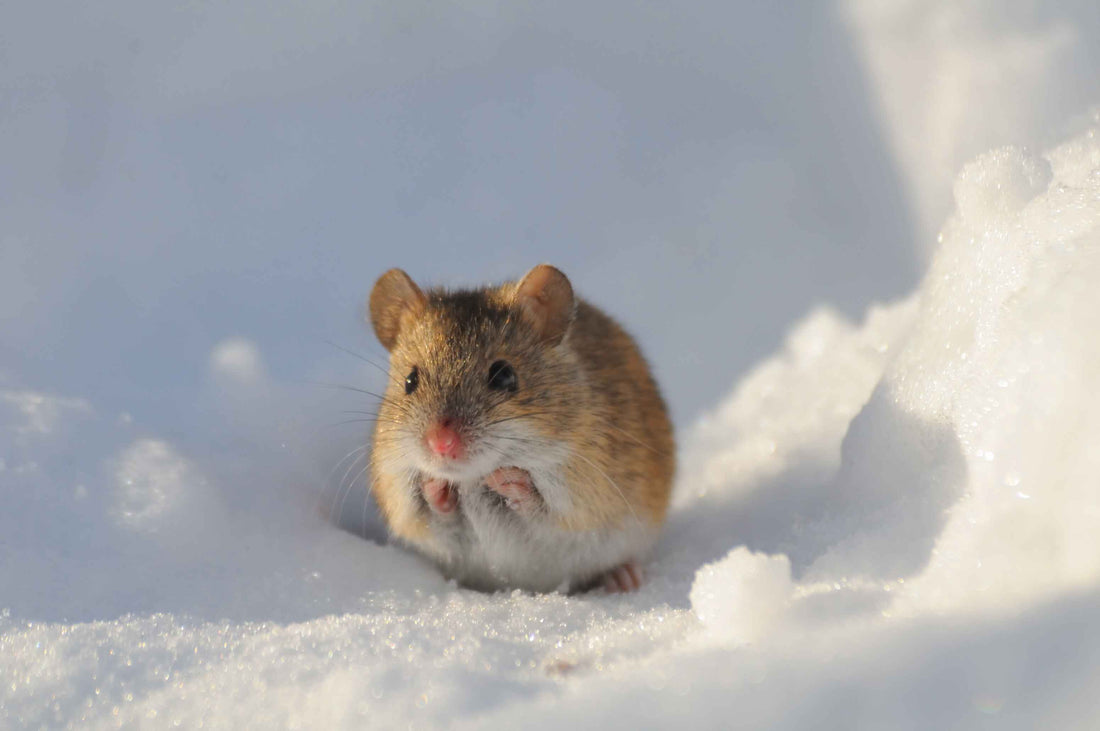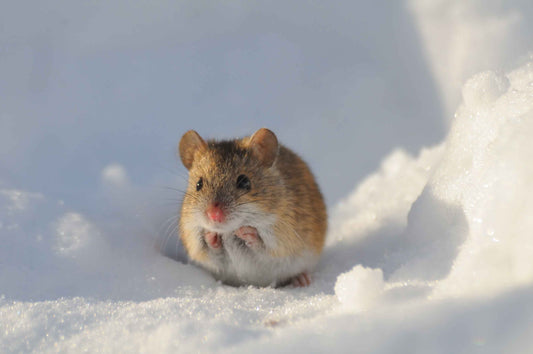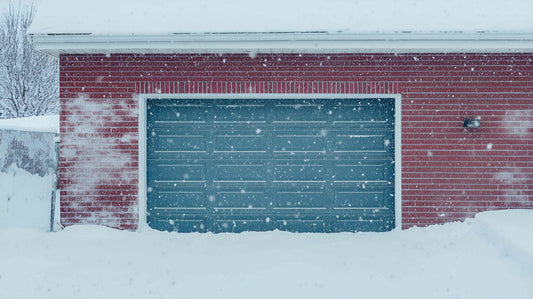
Do Mice Hibernate in the Winter?
Share
You’re cozy on the couch on a snowy evening when you hear it: a rustle in the walls, a scratch in the ceiling. And the question you don’t want to ask creeps in — was that a mouse?
We’d all like to imagine mice sleeping the winter away, but the truth isn’t so comforting.
Do Mice Hibernate?
Short answer: no.
House mice and their close cousins remain active year-round. In the wild, some small animals can enter brief, energy-saving states (called torpor), but this isn’t true hibernation — and it’s unlikely when food and shelter are available indoors. In most environments, winter simply shifts mouse behavior closer to us.
Where Do Mice Go in Winter?
Mice are survivors, which means they will go to great lengths to find heat and calories — and your home can look like a cozy getaway. Common hideouts include wall voids, attics, crawl spaces, basements, garages, and sheds. But your vehicle might be especially tempting. Under your hood, behind panels, near the cabin air filter, and in tight corners by wiring harnesses are all fair game.
That doesn’t mean they can’t survive outdoors, too.
Mice will keep moving until they find shelter. Shallow burrows, dense brush, woodpiles, and stacked materials can work. They cache food and build nests from grass, leaves, paper, and fabric.
Can Mice Survive Freezing Temperatures?
Yes — they’re adaptable. But cold snaps push them to seek stable warmth and cover. Prolonged exposure to extreme cold can be lethal, which is why “mice season” inside homes and garages ramps up in fall and early winter.
What Do Mice Eat in Winter?
Whatever’s easiest: seeds and grains, bird seed, pet food, pantry staples, crumbs in the kitchen, and even snacks stashed in cars. Garages with feed, grass seed, or coolers become winter buffets.
(Check out our full guide on what foods attract mice to your home)
When Do Mice Come Inside?
You’ll see activity climb as overnight lows dip in late fall through early winter. That’s the moment to tighten up your prevention plan.
What Risks Do Mice Pose?
Vehicle-Related Risks
- Electrical damage that snowballs into costly diagnostics: Mice gnaw to keep teeth short, and soft wire insulation is an easy target. Chewed harnesses lead to shorts, warning lights, sensor failures, and occasional no-starts — problems that are time-consuming (and pricey) to trace and fix.
- HVAC contamination that follows you into the cabin: Nests in the cabin air filter can push dander, droppings, and debris through your vents and into the vehicle cabin, leaving odors and potential allergens behind even after the mice are gone.
- Shredded insulation and damaged machinery: Insulation can make warm, hidden shelters. Nests near belts or exhaust components can create both odor issues and safety concerns.
Home-Related Risks
- Food loss and kitchen cleanups: Pantries, pet food, and bird seed are winter magnets, and once contaminated, items need to be discarded and surfaces sanitized.
- Damage to stored belongings: Attics, basements, and garages provide nesting material (cardboard, fabric, paper). Over time that means torn insulation, ruined storage, and lingering smells.
- Fire and appliance issues: Chewed wires behind walls or around appliances can create shorts and increase fire risk.
Health & Hygiene Risks
- Droppings, urine, and dander that can irritate airways: Accumulated nesting material and waste can aggravate allergies, asthma, and even cause dangerous diseases. It also requires careful cleanup (mask, gloves, ventilation, disinfectant) to avoid spreading contaminants through the air.
- Odors that signal an ongoing problem: Persistent smells — especially in HVAC areas or a closed-up vehicle — often indicate active nesting you haven’t found yet.
How to Keep Mice Out This Winter
1) Seal Entry Points to Remove the “Front Door”
Mice can flatten their bodies and slip through gaps as small as ¼ inch. Once inside, they follow wall voids to food and warmth.
- Inspect foundations, siding seams, utility penetrations, garage door edges, and weatherstripping.
- Pack gaps with steel or copper mesh and seal with caulk or mortar.
- Install door sweeps and replace torn weatherstripping.
2) Protect Food Sources to Cut Off the Reward
Odors from pet food, bird seed, and pantry items can draw mice from surprising distances — especially in cold weather.
- Store all attractants in hard, airtight containers.
- Clean up spills quickly.
- Keep trash sealed and emptied regularly.
- Avoid leaving snacks in vehicles.
3) Declutter & Elevate Storage
Clutter provides both hiding places and nesting material, making your spaces feel safe and “stocked” for mice in search of a winter home.
- Swap cardboard for lidded plastic bins.
- Lift items off the floor on shelves.
- Keep fabrics/paper in sealed totes, especially in garages and attics.
4) Block & Maintain Major “Throughways”
Unscreened vents, broken windows, piles of debris, and garage door seals all act like highways for mice when temperatures drop.
- Repair window/door screens.
- Cover vents and weep holes with rodent-proof mesh (hardware cloth).
- Tidy yard debris and keep woodpiles well away from structures.
- Trim vegetation that touches siding.
5) Shield Parked and Stored Vehicles from Expensive Rodent Damage
If you store a car, RV, or camper during the winter, eliminate a mouse’s ability to reach your vehicle in the first place by installing a Box-Kat mouse barrier around the perimeter.
Bottom line: Mice don’t hibernate. They adapt — often by moving closer to us. A few preventive steps now can save you from damaged wiring, contaminated belongings, and expensive repairs later.



